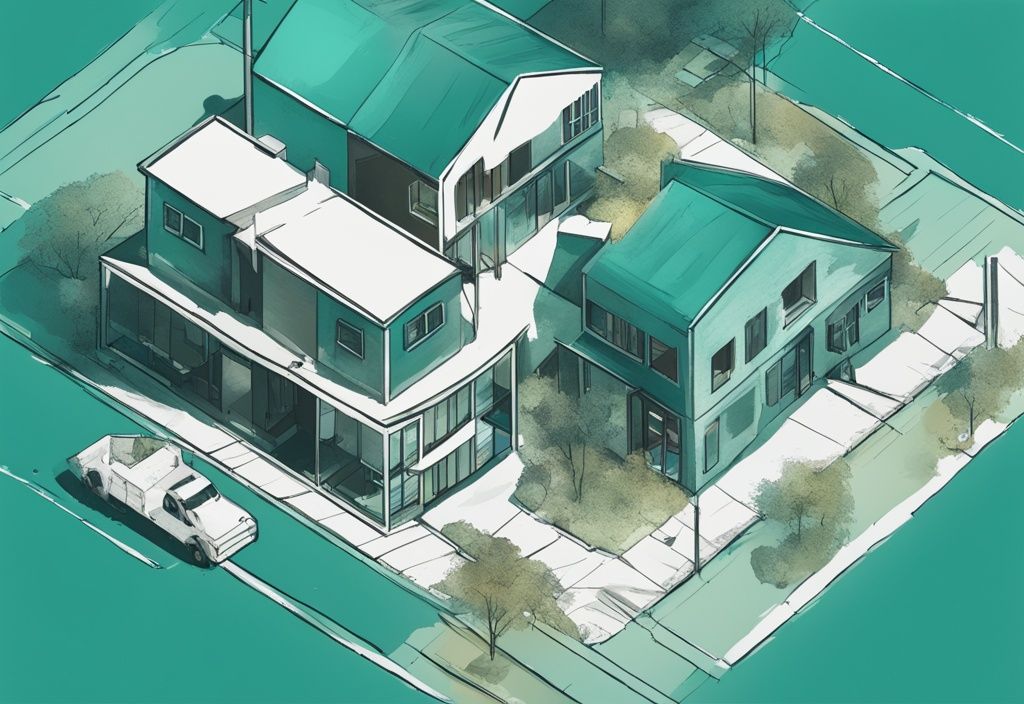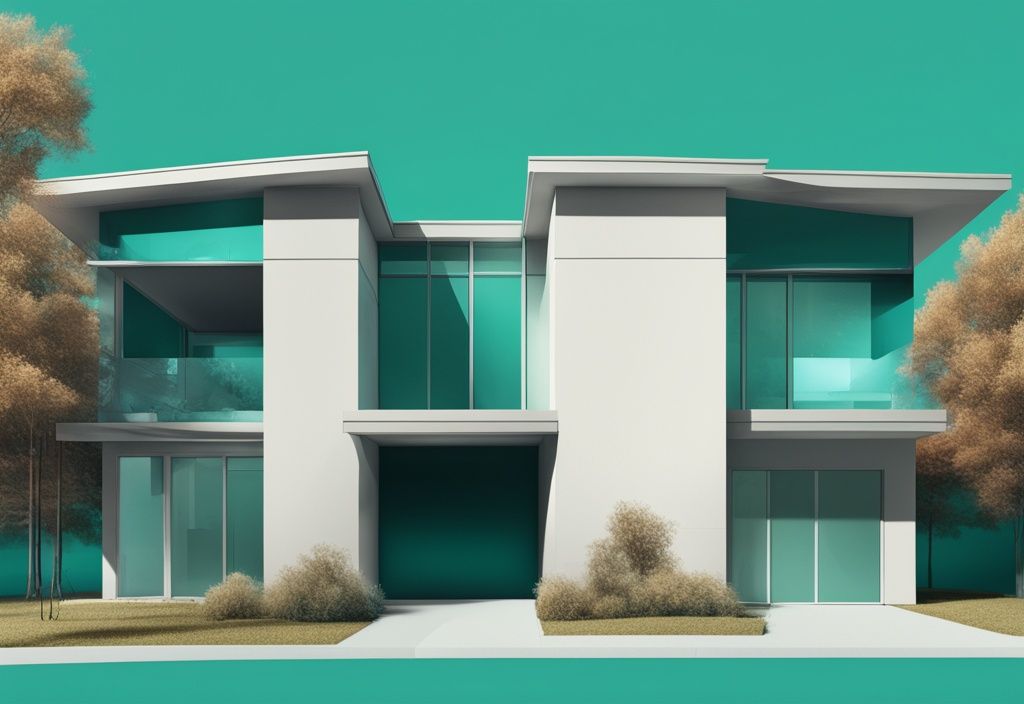Ever tried to enjoy a quiet evening at home, only to have it disrupted by noise from a nearby industrial site? You might need a buffer zone! As a seasoned real estate professional, let me tell you, buffer zones in real estate are property world heroes, crucial for curbing such conflicting scenarios. They not only protect your peace but could significantly influence your property value too.
In the upcoming article, we’ll unravel the nuts and bolts of buffer zones, their different types, and how they function. We’ll explore how they maintain harmony in mixed-use landscapes, protecting natural ecosystems, and enhancing property aesthetics.
So, whether you’re a property owner, real estate developer, or investor, join me as we dive into the remarkable world of buffer zones – your key to mastering zoning laws and environmental regulations. Now, let’s get started!
Defining Buffer Zones in Real Estate
Detailed Description and Importance
When talking real estate, you might wonder, what is a buffer zone in real estate? Think of a buffer zone as a carefully planned space that sits between different types of land uses. It’s a sort of neutral ground, designed to separate areas with different purposes and to keep things running smoothly. These zones play a key role in reducing potential friction between spaces, be it residential, commercial, or industrial.
Buffer zones really shine as protective barriers. They help in toning down conflicts between different land uses—imagine a commercial area bumping into a peaceful residential neighborhood. These buffers act like peacemakers, ensuring activities in one zone don’t spill over and negatively impact the other.
Now, buffer zones can come in all shapes and sizes. You’ll find green belts, landscaped areas, and zones for specific concerns like noise or visual impact. Picture a lush green belt separating a noisy industrial complex from a serene residential area. It not only looks good but helps in reducing noise and pollution, making life better for the residents.
There are even more specialized buffer zones. Noise buffer zones could feature sound-absorbing walls or well-placed shrubbery. Visual buffer zones might use trees, bushes, or earth mounds to keep unsightly views out of sight. The whole idea is to create a space where everyone can coexist peacefully, tackling the unique challenges of each area.
Getting a handle on what is a buffer zone in real estate is crucial for anyone into urban planning, environmental conservation, or property development. Well-thought-out buffer zones boost not only the functionality and beauty of urban settings but also protect natural habitats and improve community well-being.
Common Types of Buffer Zones in Real Estate
Understanding what is a buffer zone in real estate is critical for those involved in urban planning, development, and community design. Buffer zones serve multiple purposes, each tailored to address specific issues arising from the coexistence of diverse land uses. Here we explore the common types of buffer zones, focusing on their unique roles and benefits.
Environmental, Noise, and Visual Buffer Zones
Environmental Buffer Zones
Environmental buffer zones are designed primarily to safeguard natural ecosystems. These zones act as barriers that protect wildlife habitats from the encroachment of human activities. For example, a buffer zone might be established around a wetland to prevent runoff from nearby developments polluting the water. These areas also serve as wildlife corridors, ensuring the safe passage of animals between habitats, which is crucial for biodiversity.
Noise Buffer Zones
To improve residential tranquility, noise buffer zones are implemented to absorb or deflect unwanted sound. These zones often feature a combination of dense vegetation, walls, and other sound-absorbing materials strategically placed to mitigate noise pollution from sources like highways, railroads, or industrial areas. By reducing noise levels, these buffers enhance the living conditions for residents nearby.
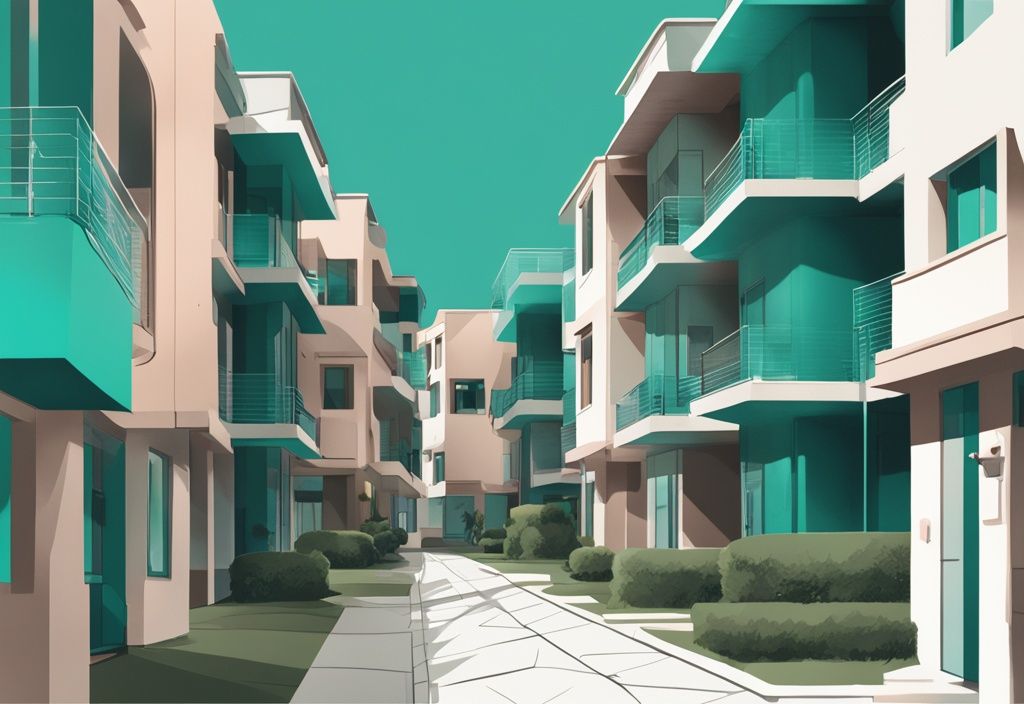
Visual Buffer Zones
Visual buffer zones are essential for enhancing the aesthetic appeal of a neighborhood while shielding residents from undesirable views. Through effective landscaping or architectural features, these buffers create a more visually pleasing environment. For instance, a row of trees or a landscaped berm can hide unsightly industrial facilities from residential communities, making the setting more harmonious.
Transitional Landscapes
Transitional landscapes are another form of buffer zone designed to provide a smooth progression between different land uses. These areas promote continuity and integration by blending the characteristics of adjacent zones. For example, a transitional landscape might include a mix of commercial and residential design elements to ease the shift between a bustling commercial district and a quiet residential area, thereby minimizing abrupt visual or functional disruptions.
How Buffer Zones Function in Real Estate
Benefits and Implementations
Buffer zones play a critical role in environmental protection. These designated areas act as guardians of biodiversity and serve as shielded habitats for various species. By providing a sanctuary where wildlife can thrive without human interference, buffer zones contribute significantly to maintaining ecological balance.
Understanding what is a buffer zone in real estate is crucial to appreciating its environmental importance, especially when considering guidelines for calculating buffer zones for agricultural practices. For more information, you can visit this page that helps fumigant applicators understand how to calculate required sizes of buffer zones and learn ways to reduce sizes of buffer zones: calculating buffer zones. These areas are like nature’s own security guards, quietly doing their job to keep ecosystems intact.
Mitigating conflicts between land uses is another essential function of buffer zones. When you have residential, commercial, or industrial developments packed tightly together, conflicts often arise. That’s where buffer zones come in! They separate these incompatible areas, creating a more peaceful environment for everyone. Imagine living next to a bustling shopping center without the constant hum of activity—buffer zones make that dream a reality by reducing noise pollution and other disturbances.
Moreover, buffer zones help preserve natural resources. Think of them as nature’s guardians, protecting water bodies, wetlands, and other critical landscapes from encroachment. These physical barriers ensure our precious natural resources are preserved for future generations. The real kicker? This not only helps the environment but also supports sustainable development in real estate.
Environmental benefits extend to opportunities for carbon sequestration. Well-maintained buffer zones can significantly enhance air quality. The trees and vegetation in these zones absorb carbon dioxide and other pollutants, contributing to a healthier urban atmosphere. This green touch helps mitigate urban heat island effects, making cities more comfortable and breathable.
Lastly, well-designed landscaped buffers can notably improve visual transitions. Let’s face it, abrupt changes in scenery between different land uses can be an eyesore. But with thoughtfully designed buffer zones—complete with green belts, landscaped areas, or even eye-catching architectural features—these spaces become seamless and visually appealing. For those curious about industry jargon, you might be wondering what BOM means in real estate. It’s like turning a clunky patchwork quilt into a harmonious masterpiece.
Incorporating buffer zones into real estate projects not only addresses environmental concerns but also boosts property values. It promotes sustainability and fosters community development. Understanding what is a buffer zone in real estate and its multifaceted benefits can guide better urban planning and real estate practices.
Buffer zones, with their myriad of benefits, enhance both our living spaces and the natural world around us. They are the unsung heroes of urban planning, quietly making our lives better.
Buffer Zones and Real Estate Development
Buffer zones serve as essential elements in real estate, creating transitional spaces that separate different land uses to foster community harmony and reduce conflicts. Alex Harper, our seasoned real estate expert, guides you through the impacts of these zones, how they touch property values, and what developers need to consider.
Impacts on Property Values and Developer Considerations
A buffer zone in real estate functions as a mediator between incompatible land uses, ensuring a smoother coexistence. Picture this: a lush green belt sandwiched between a bustling commercial area and a serene residential neighborhood. This setup not only minimizes the noise and hustle for residents but also enhances the appeal of their properties. These zones can take many forms—green belts, landscaped areas, or designated spaces—all contributing to a more pleasant living environment.
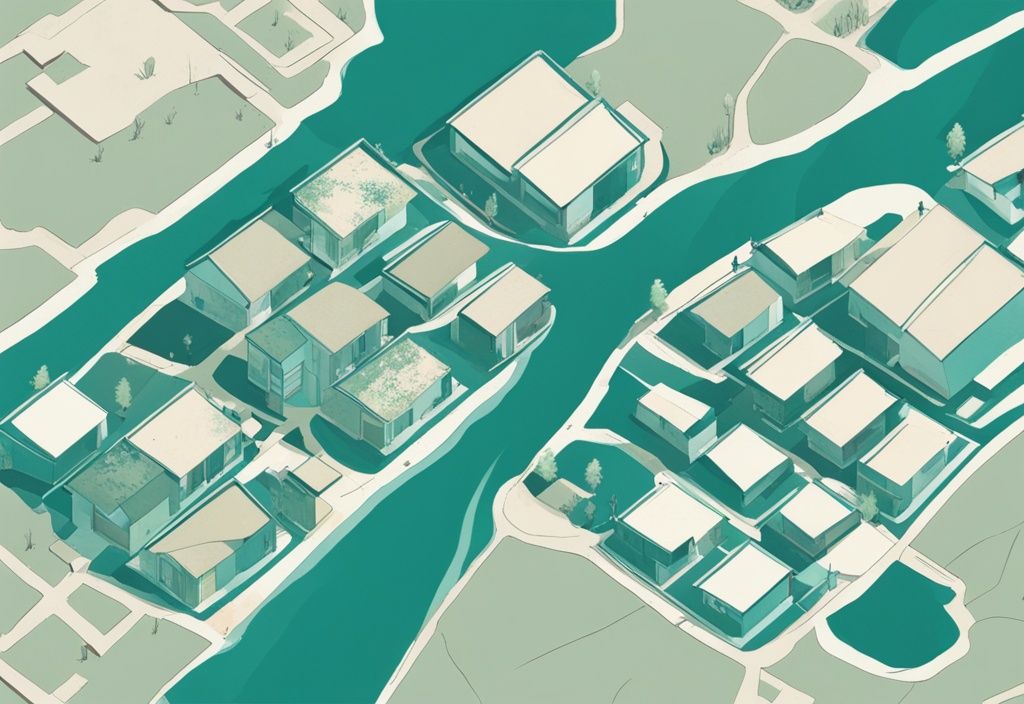
Property values often see a boost thanks to buffer zones. Think about it—who doesn’t love the sight of well-maintained greenery or a peaceful landscaped area next to their home? These zones act as visual and auditory buffers, making properties more attractive and desirable to potential buyers.
However, the journey for developers isn’t always straightforward. Navigating the maze of zoning laws and regulations can be tricky. It’s not just about placing a buffer zone; it’s about ensuring it meets the environmental and community standards. Failure to comply can lead to legal consequences, fines, or expensive changes later on. That’s why developers need to incorporate buffer zones into their planning from the beginning.
Buffer zones aren’t just good for property values; they’re great for the environment too. They help in carbon sequestration, improve air quality, and preserve critical landscapes and natural resources. These environmental perks translate into higher property values and a better quality of life for the community. For real estate investors and homebuyers, being aware of nearby buffer zones is key. If you’re interested in learning more about investment opportunities, here’s a guide on how to invest in real estate with no money. The impact on property values can vary based on the design and upkeep of these zones. A well-maintained buffer can significantly increase property desirability, while a neglected one might detract from it.
In cases where rezoning proposals hit a wall of opposition, buffer zones can be lifesavers. They offer a middle ground, meeting the concerns of various stakeholders while facilitating smoother transitions and easing the development approval process.
So, next time you’re considering a property or a new development, keep buffer zones top of mind. They’re more than just spaces; they’re silent warriors fighting to enhance your investment and improve your living standards.
Potential Challenges with Buffer Zones
Buffer zones in real estate are designed to separate incompatible land uses, such as residential areas from industrial zones. However, implementing these zones can present various challenges. Let’s explore these issues and how innovative solutions can tackle them.
Efficiency, Growth Concerns and Innovative Solutions
The concept of what is a buffer zone in real estate is often debated among urban planners, environmentalists, and developers. The challenge lies in its effectiveness; while buffer zones aim to protect residential areas and the environment, their success isn’t always guaranteed, especially in densely developed urban settings.
In these crowded areas, buffer zones might fall short, necessitating alternative strategies. Think of creative solutions like vertical green walls or multi-functional urban spaces. These innovations can enhance buffer zone efficiency and address growth-related concerns, blending seamlessly into heavily populated regions.
Real estate developers face a critical task: diligently adhering to buffer zone requirements when planning new projects or modifying existing properties. Non-compliance isn’t just a bureaucratic headache—it can lead to hefty fines, legal repercussions, or costly enforced renovations. Therefore, understanding these requirements from the outset is vital for the success of any development project.
Effective buffer zones require scientific planning to maintain an ecological balance within urbanized settings. This might involve determining the right widths, planting densities, and ensuring ongoing maintenance. Poor planning or maintenance can undermine a buffer zone’s intended function, diminishing its ecological and community benefits.
In the pursuit of functional buffer zones, incorporating innovative solutions is key. For instance, vertical green walls can be a space-efficient way to meet environmental goals, while multi-functional urban areas can serve dual purposes, supporting sustainable urban growth. These creative approaches can provide the sustainable alternatives needed in our expanding cities.
Ultimately, prioritizing scientific and innovative planning in buffer zones can boost ecological balance, protect communities, and foster sustainable urban development. By understanding and integrating what is a buffer zone in real estate into every stage of planning and development, we can work towards creating harmonious, resilient urban environments.
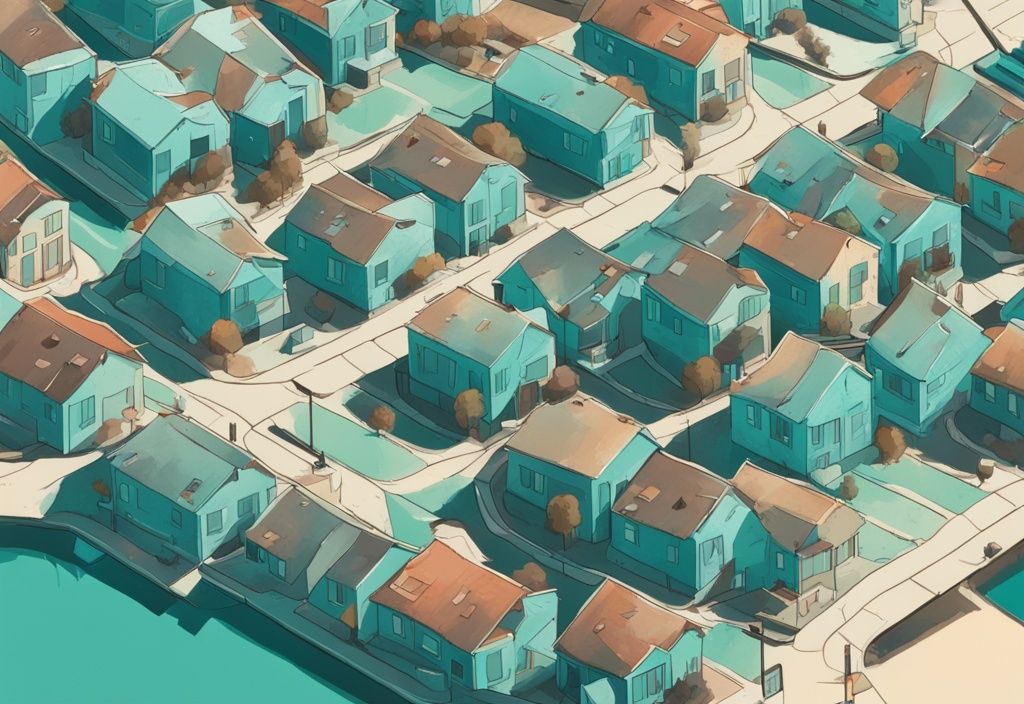
Real Case Examples of Buffer Zones in Real Estate
Urban Green Belts and Noise Buffer Zones
Urban green belts are a prime example of what a buffer zone in real estate entails. These designated areas serve multiple purposes. Imagine them as a protective hug around the city, limiting urban sprawl while providing fresh, lush recreational spaces for communities. By preserving natural landscapes, urban green belts help cities maintain an ecological balance and offer a welcome break from urban development.
Then, there are noise buffer zones. Picture the area around bustling airports or noisy highways. These zones use clever landscaping and sound barriers to reduce noise pollution. It’s like putting on noise-canceling headphones for the neighborhood! By absorbing and deflecting sound, these zones create a quieter, more tranquil living environment, enhancing the quality of life for nearby residents.
Now, think about visual buffer zones in historic districts or scenic coastal regions. These zones are like makeup artists for your view, ensuring that new developments blend beautifully with existing surroundings. Through thoughtful landscaping and architectural touch-ups, visual buffer zones protect the charm and visual harmony of an area, making sure modern constructions don’t spoil the picture-perfect scene.
By integrating green spaces, sound barriers, and aesthetic landscaping, real estate developments can effectively utilize buffer zones to handle environmental, noise, and visual concerns. It’s all about promoting a harmonious coexistence between diverse land uses, ensuring everyone can enjoy the best of both worlds.
Frequently Asked Questions about Buffer Zones
The main purpose and impact on property values
When we talk about buffer zones in real estate, we’re looking at areas designed to enforce environmental protection and create harmony between different types of land use. Think of buffer zones as the peacekeepers of your neighborhood. By offering pleasant open spaces and mitigating the negative impacts of nearby land uses, such as noise, pollution, or less appealing views, buffer zones often enhance property values. Imagine having a serene green belt instead of a noisy highway right next to your home. That’s what a buffer zone does—it provides a transitional space that not only boosts the neighborhood’s aesthetic and functionality but also makes adjacent properties more appealing to potential buyers and investors.
Legal regulations and building restrictions
Legal regulations and zoning laws are the backbone of buffer zones, ensuring they serve their intended purpose effectively. These rules typically dictate minimum distances from property lines and impose restrictions on built structures within the buffer zone to maintain its integrity. It’s pretty common for new property construction or real estate development to be prohibited in buffer zones, all thanks to the Government’s focus on environmental protection and community safety. This means buffer zones remain true to their mission of offering a protective barrier and separating different land uses.
Conclusion
Buffer zones in real estate are indispensable for maintaining ecological balance, protecting communities from incompatible land uses, and enhancing property values. These zones, strategically placed between different developments, serve as vital transitional spaces that prevent potential conflicts, promoting community harmony. Understanding what is a buffer zone in real estate reveals that these areas are crucial for sustainable urban planning and development.
The significance of buffer zones extends beyond merely separating different land uses. Think of them as protective barriers that minimize conflicts like noise, visual pollution, and environmental degradation. Implementing well-planned buffer zones helps preserve natural resources, including water bodies and wetlands, while also contributing to carbon sequestration and improving air quality.
Despite the challenges in implementing these zones, their role in enhancing the quality of life for residents is undeniable. Real estate developers must navigate zoning laws and regulations that mandate buffer zones to ensure compliance and foster sustainable growth. A well-designed buffer zone not only elevates property values but also makes rezoning proposals more palatable by offering a compromise that lessens opposition.
For stakeholders in real estate, a comprehensive understanding of the importance, benefits, types, and regulations surrounding buffer zones is essential. By thoughtfully integrating these zones into real estate projects, developers contribute to creating harmonious, resilient communities that thrive both environmentally and economically. Recognizing what is a buffer zone in real estate equips developers, investors, and homebuyers with the knowledge to make informed decisions that benefit both the community and the environment.
Hi, I’m Alex Harper, a real estate expert with over ten years of experience in property management and legal advice. My passion is making the often complicated world of real estate understandable. I share practical tips and simple solutions to help you make better decisions – whether you’re buying a home, renting or just want to learn more about the industry. With my knowledge and experience, I want you to feel well-informed and confident in your real estate projects. Let’s tackle this together!
